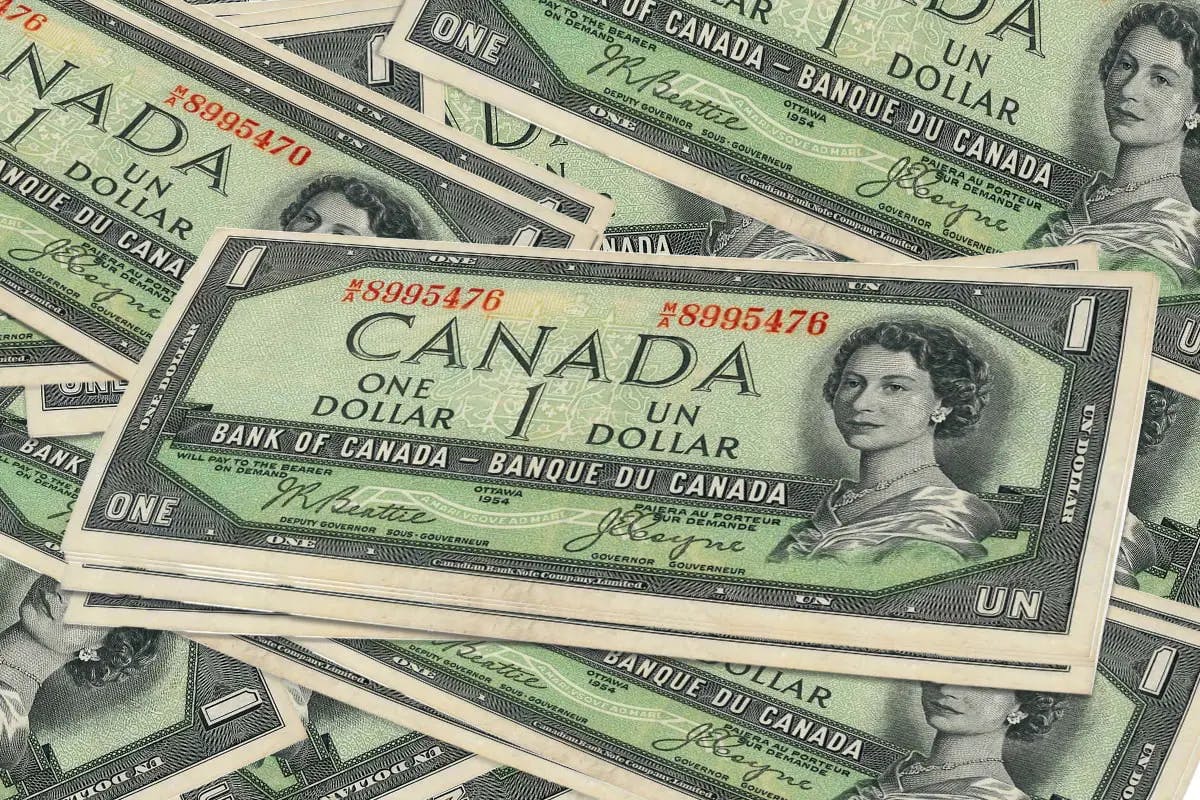5 Things You May Not Know About the Canadian 1 dollar bill
By JC Pittman | Published on 08 Aug 2022

The Canadian 1 dollar bill has been in circulation in some form since the establishment of the Canadian Dollar as a unit of currency. The Canadian 1 Dollar Bill owes its existence to Lord Sydenham’s monetary proposals in 1841. Up to this point, the paper currency used in Canada was a mosaic of Provincial, Dominion, and Foreign currencies.
In this article, we’re going to dig into history and discuss 5 things you may not know about the Canadian 1 dollar bill. It is important to note that distinction before moving forward: this article focuses on the tangible currency exchanged for Tim Horton’s coffee and donuts across the country daily for decades, rather than the Canadian Dollar, as a unit of currency.
Money history is wild
Officially, the first Canadian 1 dollar bill was issued in 1935, remaining in circulation until 1989. After the introduction of the “Loonie” 1 dollar coin.
If you happen to have a Canadian 1 dollar bill from the final printing in 1989, that bill may be worth up to $350. The rarer and better condition of the Canadian 1 dollar bill, the more it is worth. Some older bills have been valued at over $3,000.
If you are a history buff, this is for you. Why do we use the terms dollars and cents? It is because of the rising popularity of decimalization and centralization! This resulted in the Currency Act passing in 1853. It was proclaimed in 1854. This proclamation dictated that Canadamonetary ledgers record in dollars and cents. You’re welcome.
1. Yes, believe it or not, Canada had paper 1 Dollar Bills.
That’s right, kiddos! This can be even harder to fathom in an increasingly digital world, but, believe it or not, Canada had a paper one-dollar bill. Once upon a time, you could exchange a paper Canadian 1 dollar bill for any goods or services you could imagine in Canada, just like Monopoly or the United States today.
Unlike the constant presence of George Washington on the American one-dollar bill, the images on Canada’s 1 dollar bill paper currency changed over time. It changed with the ascension of each new British monarch.
Before the Bank of Canada issued paper money, a Dominion of Canada one-dollar bill was in circulation. Much like its Dominion of Canada predecessor, the first pressings of the Canadian 1 dollar bill had a portrait of King George V. The back of the bill features an allegorical image representing agriculture.
However, If you have ever touched or seen any existing Canadian 1 dollar bills, you have likely seen one of the mid-80s pressings, adorned with the familiar portrait of Queen Elizabeth II on the front. A real-life photo taken by renowned Canadian photographer Malak Karsh inspired the image on the back. The back of this one-dollar bill features an image of Parliament Hill and a tug boat in the middle of a broken log boom
2. The Dominion of Canada as the foundation for the country and money of Canada
Although people have lived on the lands now known as Canada for millennia, Canadians often need reminding that the nation of Canada is the result of Confederation in 1867. The Dominion of Canada is not entirely the same entity as Canada, the nation after 1867.
However, the Dominion of Canada had a Canadian 1 dollar bill in circulation before the act of Confederation in 1867. This Canadian 1 dollar bill served as the foundation for the country of Canada’s 1 dollar paper currency
These Dominion of Canada 1 dollar bills served as the foundation on which Canadian paper money took influence until the “Scenes of Canada” series in 1969. The most prominent of the Dominion-issued Canadian 1 dollar bill features King George V on the face and the Parliament library on the back. An uncirculated, mint condition 1923 Dominion of Canada 1 dollar bill sold at an auction in April 2022 for $855.26 Canadian.
3. Bilingualism from the beginning!
On any given day in Canada, you hear people in Canada speaking in Tagalog, Chinese, Punjabi, Hindi, Spanish, Cree, or Inuktitut, amongst many other languages. Yet, it’s well-known, that Canada has two official languages: English and French. Fun Fact: the very first Canadian 1 dollar bills produced by the Bank of Canada were bilingual!
The Bank of Canada began issuing banknotes in 1935. The Canadian federal government consulted on the designs. However, securities printers designed and printed the Bank of Canada’s “launch day” currency, known as “The First Series”. While it is the first paper currency the Bank of Canada issued, it is not the first currency the Bank produced and distributed. That honour goes to “The Bilingual Series” issued in 1937.
“The Bilingual Series” featured a central portrait of King George VI, flanked by identical English and French language text. The back of “The Bilingual Series” Canadian 1 dollar bill features the same allegorical image referencing agriculture as the 1935 “launch day” series. Notably, “The Bilingual Series” features the introduction of the currency colour scheme Canada uses to the present. All of our pretty money started a long time ago.
4. Celebrating a Centennial
Humans like to celebrate milestones or anniversaries. People concoct any number of reasons and ways to commemorate anything. The Bank of Canada does this too. It mints commemorative coins and bills, often for sale at your local post office.
The Bank of Canada celebrated the Centennial with a special commemorative Canadian 1 dollar bill that played on the banknote’s history as well that of Canada. Queen Elizabeth II graces the face of the Centennial note, while the back of the bill used the same engraving of the Parliament buildings as the 1872 Dominion of Canada $100 note. Realizing the potential to capitalize on collectors, The Bank of Canada included the numbers “1867” & “1967” on the bill’s face. The Bank of Canada made Canadian 1 dollar bill as a true collector’s item.
5. Satan lives…in the Queen’s hair?
In 1954, the Bank of Canada issued the “Landscape Series,” building toward a national identity displayed on the country’s currency. One side of the bill had images devoid of human presence and influence. That meant no machines and no people. It presented the already outdated “Great Lone Land” vision of Canada.
However, the image of Queen Elizabeth II was on the other side. The Queen’s hair hid some Hell. Yes, many Canadians believed that an image of Satan is on the 1954 edition of the Canadian 1 dollar bill.
When master engraver George Gunderson set out to craft the Queen’s image for the new series of currency, he didn’t do so with diabolic intentions. Neither did portrait photographer Yousuf Karsh. However, when the portrait went to engraving, some Canadians saw,the Devil was in her ‘do.
People in the 1950s may have raised concerns over potential sightings of Satan, however, modern-day collectors welcome the Dark Lord’s presence. Collectors pay a premium, up to $7,000 per paper bill, for any of the “Landscape Series” bills with evil lurking in the Queen’s hairstyle.
